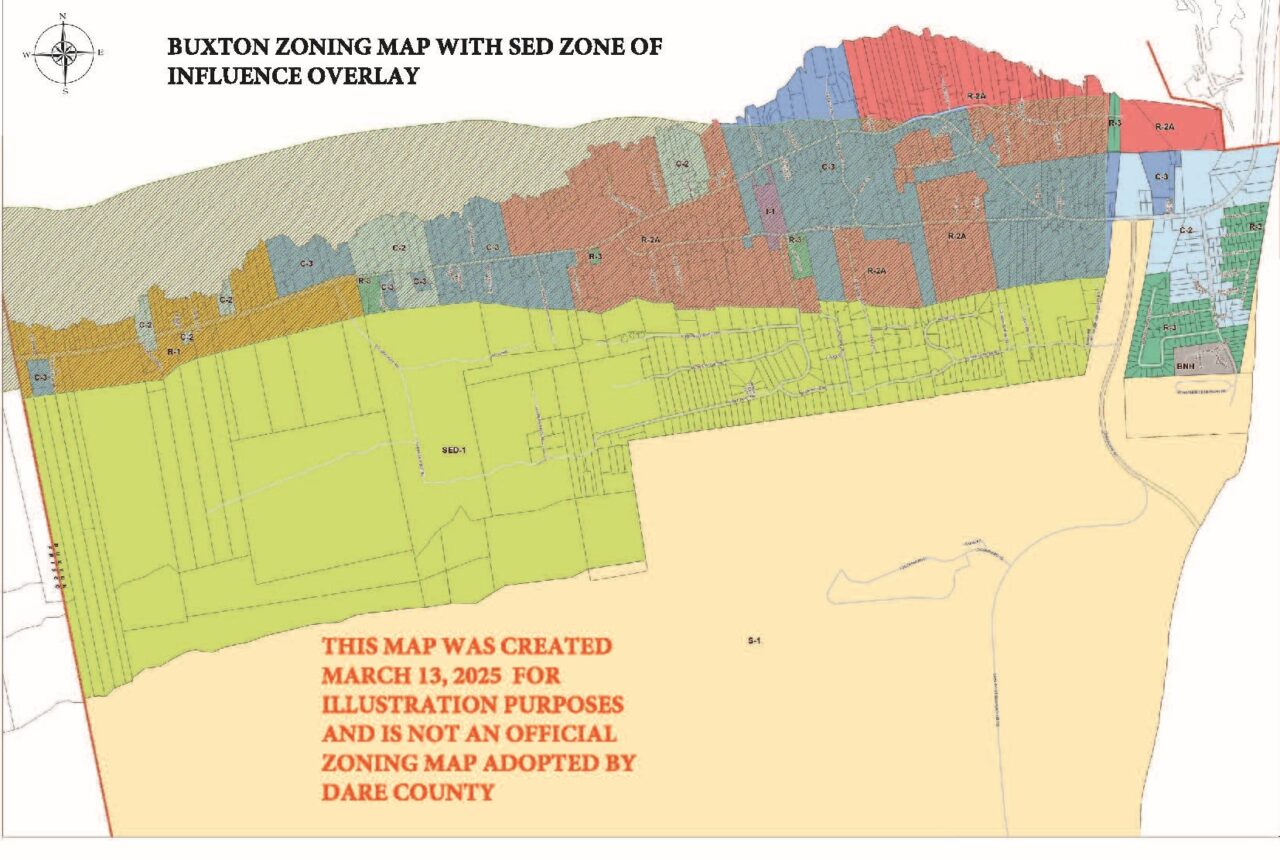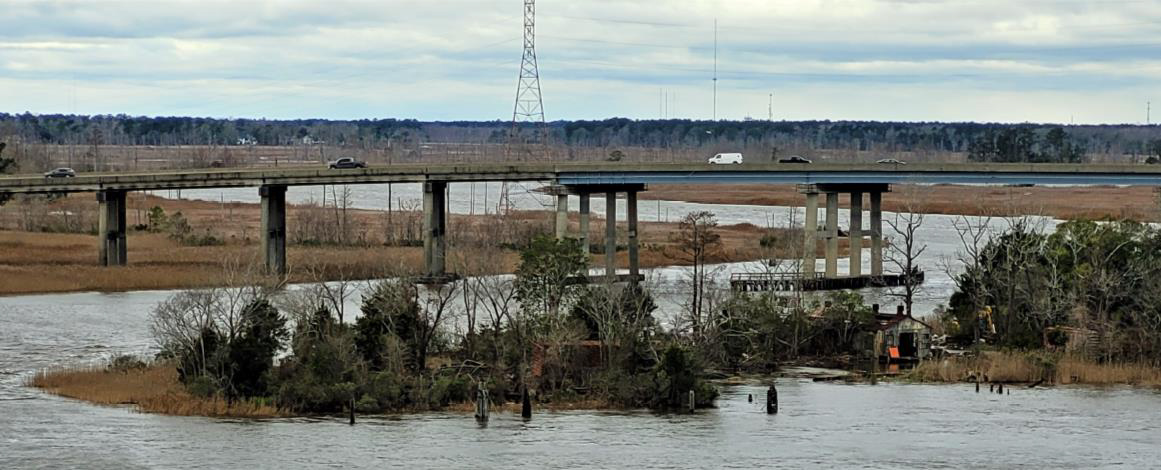
MANTEO – The Dare County Board of Commissioners, in the face of strident pushback from residents and coastal advocates over a proposal to gut special protections for an area around the Buxton Woods Reserve, voted Monday to keep in place those development restrictions officials had previously called “unenforceable.”
The longstanding restrictions on multifamily dwellings within the half-mile buffer around the 1,007-acre Buxton Woods Reserve on Hatteras Island are part of a zoning ordinance that created the 1,868-acre special environmental district, also known as SED-1, which also includes protective areas around the island’s drinking water wellheads.
Supporter Spotlight
A company called OBX Timber Trail LLC in March had requested that the county remove the zone’s dwelling density limitation for multifamily development, townhouses, or condominium projects. The request from company manager and New Jersey resident Brian Suth was so he could add a fourth apartment for year-round occupancy to his commercial building in Frisco.
That request was ultimately granted in a unanimous vote Monday, but only after it had triggered questions among county officials about the validity of the 1988 zoning ordinance in place, and fears among Buxton residents and others that the special protections would be erased.
Dare County Planning Director Noah Gillam said during a meeting in April that the ordinance didn’t appear to meet state standards because it hadn’t been properly indexed or codified.
Others disagreed.
“The ordinance was properly adopted in 1988, “Southern Environmental Law Center attorneys Derb Carter and Julie Youngman wrote in a letter to Dare County Manager Bobby Outten dated Aug. 1.
Supporter Spotlight
When Suth submitted his request, Gillam found there had been no reference to the ordinance since the 1990s. Consequently, there had been no development that would have challenged its wording.
Concerned about confusion and possible legal challenges, Gillam proposed striking the ordinance entirely.
That’s not what happened Monday commissioners opted instead to approve a text amendment for the fourth apartment rather than remove the entire ordinance.
“Our original amendment for the text amendment was solely to lift the limitations on density, not to eliminate the entire ordinance,” said Joseph Anlauf, engineer for the project, during the commissioners’ discussion.
During a commissioners meeting May 6, the board, after hearing from Buxton residents who were vocal in support of the overlay district and a preliminary opinion from Outten that the county might lose a court challenge on the issue of improper indexing, postponed a vote to allow time for a firmer legal opinion.
Outten’s concern were confirmed by Outer Banks attorney John Leidy that it was likely the county would lose a court challenge. Outten was also worried about the implications of a state law passed late last year that prohibits downzoning, or placing a more restrictive use on a property after it has been purchased, as could be the case in enforcing SED-1 restrictions.
But the Southern Environmental Law Center pushed back in its letter, holding that, although state statutes require indexing, “it does not specifically state that an ordinance cannot be enforced if those requirements are not precisely satisfied.” Nor does the law provide a “definition of ‘indexing’ or any directions for how to do it properly.”
Other officials had submitted their written concerns about removing the development restrictions, including David Owens, who was with the North Carolina Division of Coastal Management for a decade, notably serving as its director at the time the ordinance was adopted, an author, historian in land use law and retired professor of public law and government at the University of North Carolina School of Government.
In his letter, Owens recalled that the “Dare County Board of Commissioners, the county planning staff, and the county attorney all strongly argued for local regulation, contending the standards the county would adopt would be comparable to the state standards being considered.”
John Taggert, who in the 1980s and 1990s was the Coastal Reserve and National Estuarine Reserve manager, had urged in a letter that commissioners “retain the ordinance with consistent enforcement to permit development within the buffer that will reasonably protect Buxton Woods from significant loss of adjacent vegetative cover and allow sufficient natural infiltration for sustainable recharge of the underlying aquifer system.”
lan Weakley, professor of botany and conservation biology at UNC, also wrote to commissioners, noting that the county had approved the zoning regulations to bolster coastal protections.
“In the 1980s and early 1990s,” Weakley wrote, “the state Coastal Resources Commission relied on the Dare County zoning protections in deferring regulation of Buxton Woods as a CAMA (Coastal Area Management Act) Area of Environmental Concern. The decision was that the zoning regulations, as written and implemented, would maintain a buffer with sufficient natural character, including canopy closure, to protect the natural values of Buxton Woods.”







